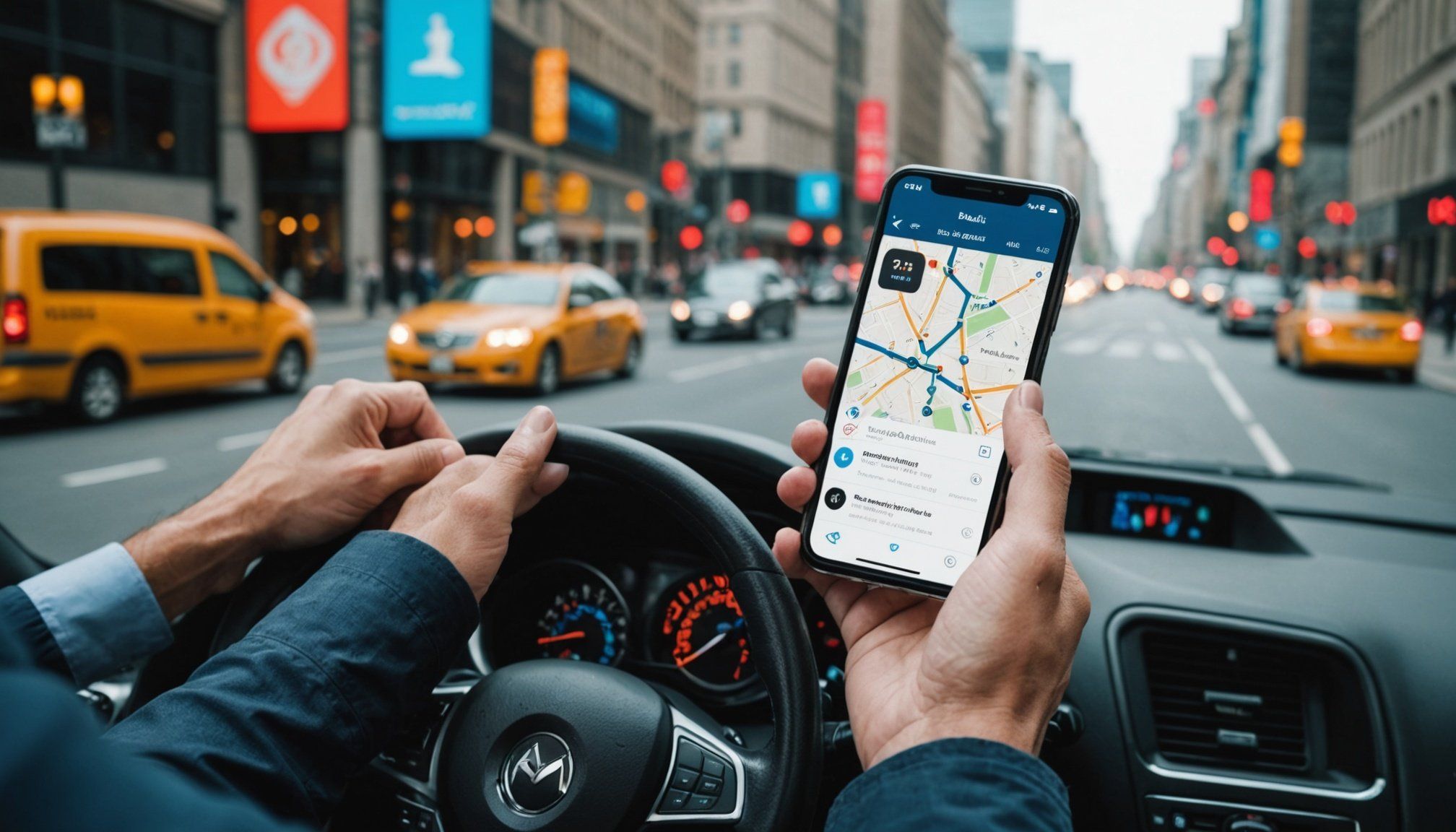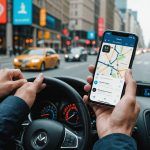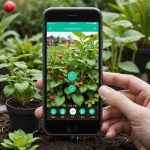Optimizing Smartphone Settings for Instant Traffic Notifications
Configuring your smartphone to receive real-time traffic notifications can significantly enhance your commute. Start by enabling location services on your device. This ensures your phone accurately tracks your whereabouts, providing precise traffic data. Without active location services, you risk receiving outdated or incorrect information, hindering your ability to make informed travel decisions.
Next, configure notification settings. Dive into the app settings and allow traffic notifications to bypass any “Do Not Disturb” modes you might have enabled. This guarantees you’ll receive urgent updates without any delay. For efficiency, prioritize alerts for your commonly traveled routes.
Topic to read : Transform Your Smartphone into a Cutting-Edge Garden Guardian: An In-Depth Guide to Smart Gardening
Additionally, adjusting app permissions is crucial for timely updates. Ensure your chosen traffic app can access necessary phone resources like the internet and GPS. Granting these permissions allows the app to function optimally, keeping you informed promptly as new traffic conditions arise.
To summarize, an optimal setup involves:
Have you seen this : Unlocking Smart Watering Solutions: The Comprehensive Handbook to Smartphone-Driven Home Irrigation Systems
- Enabling location services.
- Configuring notification settings to break through “Do Not Disturb” barriers.
- Adjusting app permissions for seamless access to crucial phone features.
By managing these settings appropriately, your smartphone becomes a reliable partner, constantly updating you with real-time traffic information.
Recommended Apps for Traffic Updates
Navigating daily commutes can be made easier with the use of traffic apps, providing real-time traffic updates. Understanding the options available and their features empowers decision-making.
Overview of Top Traffic Apps
In the realm of traffic navigation, several apps lead the way. Google Maps, a staple for many, offers comprehensive maps and integrated traffic alerts. Waze, another popular choice, leverages user-contributed data for real-time conditions, making it reliable for adaptive route changes. Apple Maps, suitable for iOS users, offers seamless integration with the Apple ecosystem, ensuring convenience for those within its environment.
Features Comparison
Each app distinguishes itself with unique functionalities. Google Maps excels with its detailed street-level views, while Waze shines with its real-time user reports on incidents. Apple Maps integrates Siri for hands-free operation, advantageous for drivers seeking minimal distractions. Key features like turn-by-turn navigation, real-time alerts, and offline maps support are critical.
User Ratings and Testimonials
Users’ experiences offer insights into each app’s effectiveness. Google Maps is lauded for its accuracy, while Waze is appreciated for its dynamic rerouting. Testimonials also highlight Apple Maps‘ ease of use and the seamless integration it provides to Apple device users. These diverse perspectives help potential users assess compatibility with their preferences.
Step-by-Step Instructions for Personalization
Personalizing your traffic notifications can transform your commuting experience. Begin by customizing app settings to receive your preferred notification types. This can include alerts for accidents, road closures, or heavy congestion. Tailor these settings according to your daily needs for optimized information delivery.
Next, set up alerts for specific routes and times. If you commute at the same time each day, configure your app to notify you of any disruptions on your standard route. This proactive approach ensures you make informed decisions, avoiding unexpected delays.
Additionally, consider integrating calendar events. Many traffic apps allow synchronization with your calendar to offer seamless travel planning. By doing so, the app can predict when you should start your journey to meet scheduled events timely, adjusting directions for unforeseen obstacles.
Remember, these customization steps aren’t just about convenience; they significantly enhance your app’s functionality. By taking full advantage of personalization options, your smartphone evolves into an indispensable tool for navigating traffic, making daily commutes significantly less stressful. Embrace these changes for a smarter, more responsive travel routine.
Expert Advice on Integrating Features for Real-Time Notifications
Efficiently managing traffic notifications can significantly enhance your daily commute. Here’s some expert advice on optimizing notification management.
Utilizing Voice Assistants for Traffic Alerts
Using voice assistants like Siri, Alexa, or Google Assistant facilitates hands-free updates. Simply configure them to deliver real-time traffic updates. By saying commands like “Hey Siri, is there traffic on my route?” you can receive timely information without distractions, improving traffic integration seamlessly.
Syncing with Smart Devices
Sync your smartphone with smart devices like smartwatches or smart speakers for enhanced notifications. This integration ensures updated traffic information across your connected devices, creating a coherent system for traffic updates.
Keeping Apps Updated
Maintaining your apps’ latest versions is crucial for performance. Regular updates often include security patches and feature enhancements that improve the real-time updates functionality. Ensure your device is set to automatically update apps, guaranteeing you access the best version, optimized for traffic data accuracy.
By adopting these expert tips, you transform your smartphone into a potent tool for efficient commuting, while ensuring a smoother, more informed travel experience.
Visual Aids and Infographics
Enhance your understanding of traffic notification guides with visual aids. These tools simplify smartphone usability by offering intuitive information visualization.
Illustrations of App Interfaces
Detailed illustrations of app interfaces provide a straightforward way to navigate advanced features in traffic apps. Easily recognize and utilise notification settings and location services configurations through these visuals, thereby ensuring accurate real-time updates.
Step-by-Step Infographics
Step-by-step infographics break down the setup process into manageable segments. These visual guides make traffic notifications setup simple and efficient. Instead of lengthy instructions, infographics offer a quick reference, enhancing overall user experience.
Comparison Charts
Utilise comparison charts to evaluate the performance of different apps. These visual tools contrast key aspects like real-time traffic updates, user interface fluidity, and notification efficiency. By comparing options side-by-side, makes it is easier to find an app that aligns with your traffic needs.
In the realm of traffic navigation, these visual elements ensure you fully leverage your smartphone settings. They facilitate a seamless transition from setup to everyday use, fostering a confident, informed approach to managing your travel notifications.
User Testimonials and Real-World Experiences
Understanding how apps work in real-world applications can profoundly impact your traffic experience.
Success Stories
Many users recount their journey to improving commute efficiency through app usage as transformative. One commuter from London highlights that utilizing traffic apps like Waze reduced their travel time by 30%. The real-time updates alerted them to alternative routes, illustrating how user feedback showcases substantial benefits.
A frequent traveller praised Google Maps for its real-time traffic updates, ensuring timely arrival to meetings. For users in congested cities, these accounts reveal how essential the right traffic app is for daily navigation.
Common Challenges and Solutions
However, the practical implementation isn’t without issues. Users often struggle with battery drainage when utilizing these apps. A simple solution is enabling battery-saving modes or reducing screen brightness. Another frequent concern is overwhelmed notifications due to excessive alerts. Optimized smartphone settings can alleviate this, limiting notifications to critical updates.
Such real-life applications underscore that personalizing settings and wisely choosing apps ensures a smoother commute. Users’ experiences reflect both the apps’ potential and practical challenges, motivating others to explore solutions for an optimized traffic experience.











